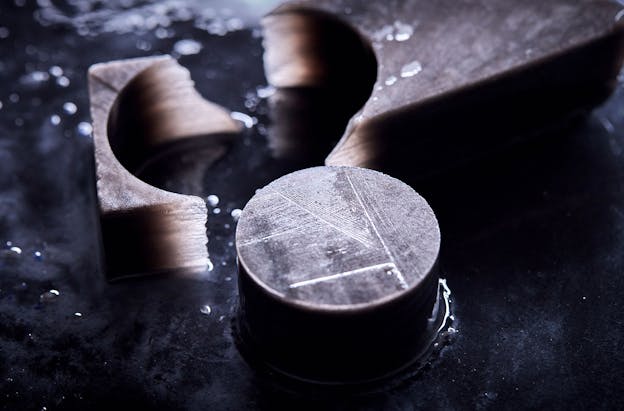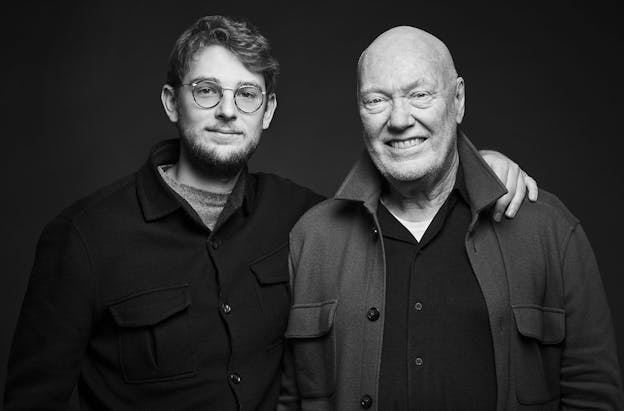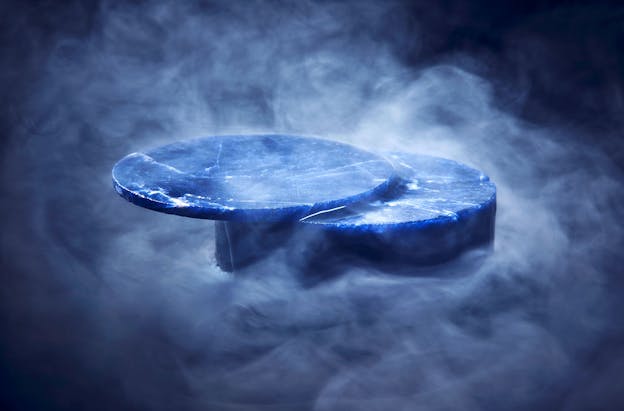The Lion in Winter: The Carillon Tourbillon Biver
“I will be the master of my cheese until the last piece.” — Jean-Claude Biver, 2009
I have a lot of memories of Jean-Claude Biver. If you have spent any time at all in the watch industry over the last 40 or so years, chances are you do too. Born in 1949 in Luxembourg, Biver spent his entire professional life (and probably most of his personal life, too) in the watchmaking industry, starting with his first job in sales at Audemars Piguet in 1974. He subsequently worked at Omega and then started Blancpain with complicated movement specialist Jacques Piguet in 1983, after buying the name from Swatch Group precursor SSIH. Blancpain was his first big success — he sold it back to SSIH in 1992 for 60 million Swiss francs.
Since then, he has been CEO of Hublot, CEO of TAG Heuer and, finally, the boss of all watch brands at LVMH, from which position he retired in 2018. This is so inadequate a synopsis of his career and his effect on the industry as to not even deserve to be called “inadequate.” But let’s just say, he was one of those showmen, entrepreneurs and genuine lovers of fine watchmaking who was essential to shaping the modern luxury watch landscape, and leave it at that.

The memory I have of JCB, as he’s often called, which sticks out even from a lot of other very vivid memories, is a meeting that took place at BaselWorld in the mid-2010s. Biver has a highly forceful personality and when he speaks, more often than not, one finger is jabbing the air for emphasis or pounding the table (also for emphasis). The meeting took place in a windowless room at the TAG Heuer booth (I was with Revolution Magazine at the time) and Biver, without preamble, opened the phone-book-sized printed Baselworld catalog and started shouting. Normally starting a meeting with the volume turned up to 11 is something that would seem unusual, disruptive or out of the ordinary, but Biver’s default volume was shouting.
“Look at this catalog,” he shouted in a tone that clearly indicated he hardly considered it worthy of the name. He began jabbing at pictures of watches — some of them from his own brands. “If you want to succeed as a watch brand, you must have icon,” he thundered.
“Look! No icon, no icon, no icon,” as he jabbed. He then narrowed his eyes and squinted, “Eh,” he grumbled, as if it pained him to say it, “this one is okay.”
Birth of a Brand
This is all by way of saying Biver is not a man who ever seems to have suffered from doubt or indecision although I always suspected that beneath the (I think somewhat deliberately cultivated) bombast and irascibility was someone who was just as capable of self-doubt as the next fellow — maybe more so. Certainly, if someone had asked me at any time over the next 20 years whether or not he was about to start his own brand, under his own name, I would have bet real money on it happening sooner than later, but at the time of his apparent retirement from the industry, he still had not done so (and had in fact said several times in the years before leaving LVMH that he had no interest in doing so. Remarking at one point that the only person whose name should be on a watch, was that of a watchmaker). However, when his retirement from LVMH was announced, it occurred to me to wonder whether the launch, after many decades, of a brand of his own might be in the offing, as he had always given me the impression of a man about as capable of retiring as a lion is of becoming a tofu maker.
Last year, Biver announced that, indeed, he would be starting his own brand and when I talked to him about it in Geneva just before the last Watches and Wonders, he outlined what it was he wanted to do, and what he wanted the brand to be.

First and foremost, he asserted, it was a family project, with his son Pierre’s youth, energy, love of vintage watch collecting and his own specific ideas about what makes a watch an interesting watch getting into the mix. Second, they would be complicated watches. And third, they would represent an extremely traditional approach to classic, high-end Swiss watchmaking — no compromises on finish, no compromises on complexity, no compromises on anything (and of course, no compromises on price, which we’ll get to in a minute).
Neither I, nor I think anyone else, had the remotest idea what Biver’s first watch would look like. Although I thought it might be at least slightly reminiscent of some of his work at Blancpain; of all the companies with which Biver was involved it’s the closest he’s ever come to starting with a blank sheet of paper. Blancpain, however, was conceived at a time when the Quartz Crisis was at its peak and during which, if you were going to launch a mechanical watch brand, to say nothing of one which made refusing to use quartz a rallying cry, then you were probably going to choose designs which reflected, more or less, traditional watchmaking values. Blancpain was intended to fit into a particular niche in the watch market (although you could say that what it was really intended to do was create one) and so there were constraints on the designs present then which are not present now.
Biver’s first watch, therefore, reflects not only the enormous shift in the world of luxury watchmaking since his debut as the owner of his first owned brand in 1983-84, it also reflects his own accumulated lifetime of experiences and the evolution of his own tastes; and, of course, the input of his son Pierre as well.
A Complicated Deput
The first Biver watches are reminiscent of the Blancpain launch in that they are quite complicated, and quite traditionally complicated as well. Biver oversaw more than his fair share of exotic complications over the years, but for the first Biver watch, he’s playing some well known hits. The Carillon Tourbillon Biver is, as they say, just what it says on the tin. The repeater chimes on three gongs, with three hammers, and the one minute tourbillon is visible through an aperture in the dial. The movement, caliber JCB 001, is wound by a microrotor, with a 72 hour power reserve.
Unlike his first outing with Blancpain, however, the watches, while rooted in classical watch design (round, precious metals, lavish finishing, traditional complications), they are also, and obviously by intention, considerably more visually dazzling and obviously opulent than, say, a mid-century complicated watch from Patek, Vacheron or Audemars would be.

First, they are very much modern watches in terms of size, at 42mm x 13.5mm; second, the bracelets are elaborately faceted, glittering affairs and third, the dials, hands and dial furniture go for considerable dazzle as well. Dials are in sodalite or silver obsidian — both chosen partly for their decorative properties as well as, according to JCB, their purported spiritual symbolism. Sodalite is a relative newcomer in terms of use as an ornamental stone and has a rich blue color reminiscent of lapis lazuli; silver obsidian is a rare type of obsidian (a kind of black volcanic glass) which has regions of inclusions formed of tiny bubbles in the body of the mineral, which give it silvery highlights. Both are hard but fragile; for the Carillon Tourbillon Biver, they have been cut very thin — 0.6mm — and then fixed to a gold plate; total thickness of the dials is just 1.15mm, with an overall thickness for the dial of 1.6mm, including the applied indexes.

Probably the most noticeable departure from business as usual, visually, is the tourbillon cage, which has sharply pointed arms that give it a very definite relationship to the Japanese throwing weapon known as a shuriken. These are matched by the sharp tips on the ends of the tourbillon bridge, as well as the knifelike profiles of the hands and even the applied markers — in fact the entire dial of the watch is positively bristling with sharp points and edges, giving you the impression that you’re looking at a collection of arms and armor in miniature.
The Carillon Tourbillon Biver is being made in titanium, rose gold or a combination of the two metals. If you have gotten this far and begun to suspect that these are going to be very expensive watches, you are 100 percent correct; they start at about $520,000, and the prices top out at $1,315,000 for a diamond-set model.
Swiss Cheese, Swiss Watches
As far as I’m aware, other than his (and his son’s) new watch company, the only personal creative project Biver has undertaken over the long term, over the course of his very busy life, is making a small amount of gruyère cheese at his farm in the Alps. The process is extremely labor intensive, even by the standards of artisanal cheesemaking, and the salient characteristic of his cheese production is, in fact, identical to that of his new watch — you do exactly what you want to do, without regard for cost or risk. And in both cases, there is a kind of expression of terroir — the sort of high end finishing that is almost universally regarded as the gold standard in fine watchmaking is actually the product of a highly specific place and time, and we only think it’s ubiquitous because of the degree to which Switzerland has come to dominate the world of mechanical luxury watches.

There are things about the Carillon Tourbillon Biver that I’m unsure of — mostly, it has to do with all those somewhat menacing looking sharp edges; at least in photographs they give the watch an almost threatening quality. However, I suspect the effect is somewhat less overtly aggressive in the metal and I’m certainly not going to pass judgment on a project of this magnitude without seeing the watches in person. What is not open to doubt, is that these watches are exactly what JCB wanted them to be — no more, no less. Biver has said he is going to be master of his cheese to the last piece and by God I can almost hear him saying (shouting) that he is going to be master of his watches to the last screw, take it or leave it.
The Half-Million Dollar Question
Which brings us to the price. Is it worth it? This question is the single most commonly asked in the world of fine watchmaking and is ultimately one to be settled between a buyer and their financial advisor(s). This is not to say you can justify paying any amount for anything, of course, and given how prices have skyrocketed for some brands and some watches over the years, any serious enthusiast ought to approach the question with an awareness that there has indeed been something of an impressive disconnect (at least in some instances), between cost and actual horological content.

Let us then shop for comparison a bit. A Carillon Tourbillon Biver in rose gold with a rose gold bracelet is priced at around $625,000. In Patek’s current catalog, the open-dial 5303R minute repeater tourbillon is a price-on-request model, but price has been quoted as about CHF 590,000, which right now is about $659,235 (rounded up). It’s not exactly an apples-to-apples comparison — the Patek is hand-wound and comes on a strap, not a bracelet — but they are roughly similar watches in complexity and, presumably, level of finish; so the Biver is, in fact, more or less in the ballpark. Both watches are very rare, relatively difficult to acquire (both are made in very small numbers — the Patek is an application piece — and, while neither is a limited edition, it’s probably safe to say that less than a dozen of the Carillon Tourbillon Biver watches will be made in any given year. So it is not in fact evident prima facie that the Biver is dramatically less “worth it” than the Patek.
The only thing to do, if you’re interested in one of Biver’s new watches, is to see one in person if you can and then decide for yourself. As I remember someone saying years ago, in a different context, if you want a Ferrari and can afford one, the question is not, if it’s worth it; the question is, what color?

